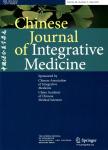Polysaccharide of Alocasia cucullata Exerts Antitumor Effect by Regulating Bcl-2, Caspase-3 and ERK1/2 Expressions during Long-Time Administration
作者机构:School of Traditional Chinese MedicineSouthern Medical UniversityGuangzhou(510515)China Clinical and Basic Research Team of TCM Prevention and Treatment of Non-Small Cell Lung Cancerthe Second Clinical College of Guangzhou University of Chinese MedicineGuangzhou(510120)China Department of Chinese MedicineZhujiang Hospital Affiliated to Southern Medical UniversityGuangzhou(510282)China Department of PharmacyJiangmen Central HospitalJiangmen(529000)China
出 版 物:《Chinese Journal of Integrative Medicine》 (中国结合医学杂志(英文版))
年 卷 期:2024年第30卷第1期
页 面:52-61页
核心收录:
学科分类:1008[医学-中药学(可授医学、理学学位)] 1006[医学-中西医结合] 1002[医学-临床医学] 100602[医学-中西医结合临床] 10[医学]
基 金:Supported by National Science Foundation of China (No. 81828014)
主 题:polysaccharide of Alocasia cucullata tumor cells Bcl-2 Caspase-3 ERK1/2 Chinese medicine
摘 要:Objective: To study the in vitro and in vivo antitumor effects of the polysaccharide of Alocasia cucullata(PAC) and the underlying mechanism. Methods: B16F10 and 4T1 cells were cultured with PAC of 40 μg/m L, and PAC was withdrawn after 40 days of administration. The cell viability was detected by cell counting kit-8. The expression of Bcl-2 and Caspase-3 proteins were detected by Western blot and the expressions of ERK1/2 mRNA were detected by quantitative real-time polymerase chain reaction(qRT-PCR). A mouse melanoma model was established to study the effect of PAC during long-time administration. Mice were divided into 3 treatment groups: control group treated with normal saline, positive control group(LNT group) treated with lentinan at 100 mg/(kg·d), and PAC group treated with PAC at 120 mg/(kg·d). The pathological changes of tumor tissues were observed by hematoxylin-eosin staining. The cell apoptosis of tumor tissues was detected by TUNEL staining. Bcl-2 and Caspase-3 protein expressions were detected by immunohistochemistry, and the expressions of ERK1/2, JNK1 and p38 mRNA were detected by qRT-PCR. Results: In vitro, no strong inhibitory effects of PAC were found in various tumor cells after 48 or 72 h of administration. Interestingly however, after 40 days of cultivation under PAC, an inhibitory effect on B16F10 cells was found. Correspondingly, the long-time administration of PAC led to downregulation of Bcl-2 protein(P 0.05), up-regulation of Caspase-3 protein(P0.05) and ERK1 mRNA(P0.05) in B16F10 cells. The above results were verified by in vivo experiments. In addition, viability of B16F10 cells under long-time administration culture in vitro decreased after drug withdrawal, and similar results were also observed in 4T1 cells. Conclusions: Long-time administration of PAC can significantly inhibit viability and promote apoptosis of tumor cells, and had obvious antitumor effect in tumor-bearing mice.



